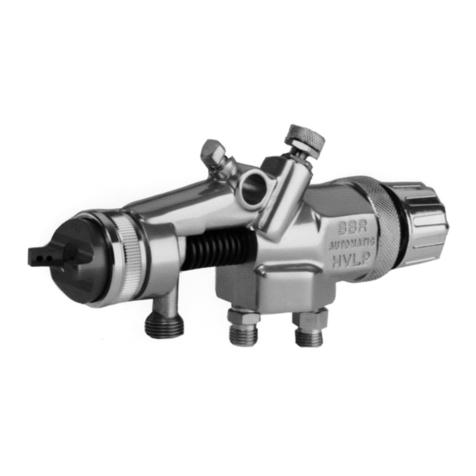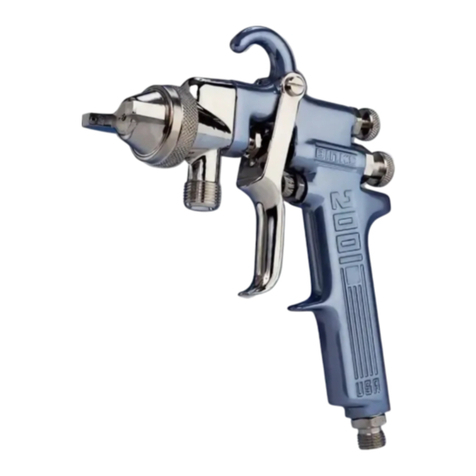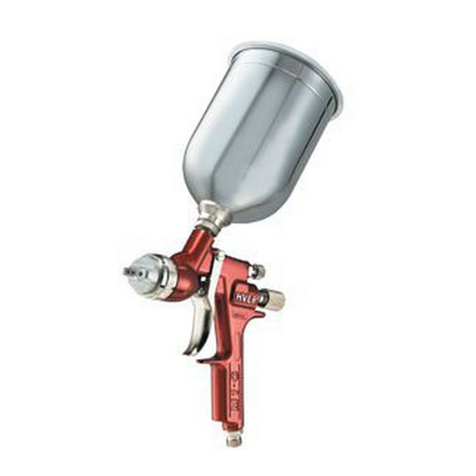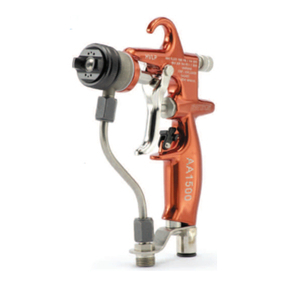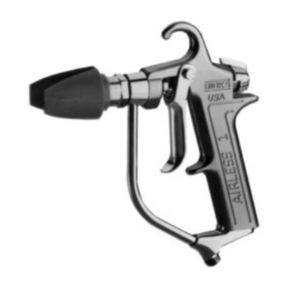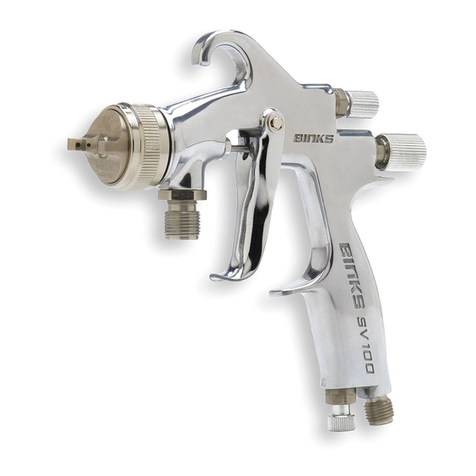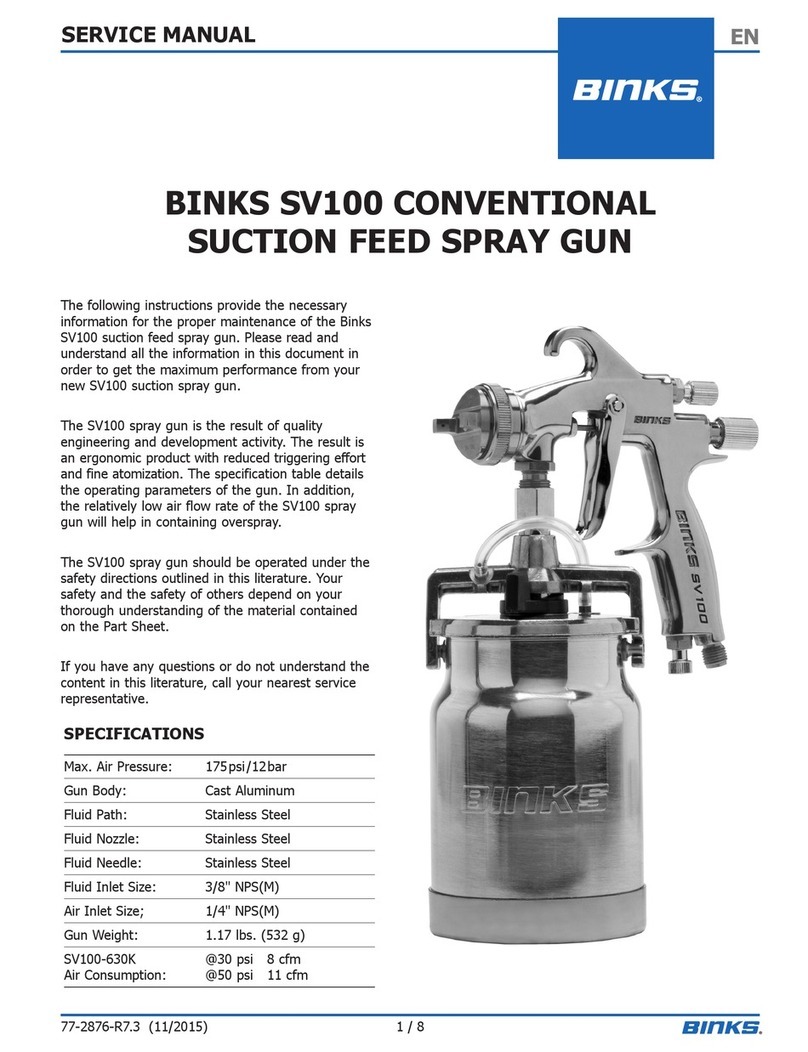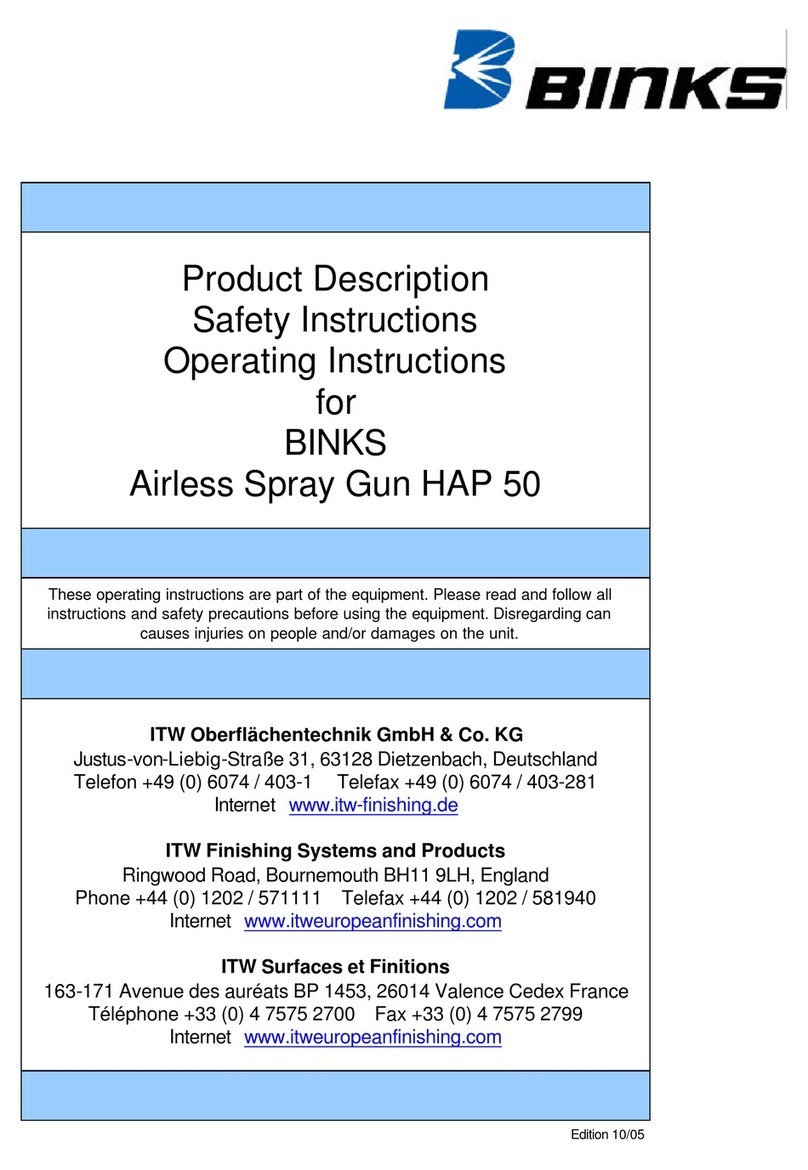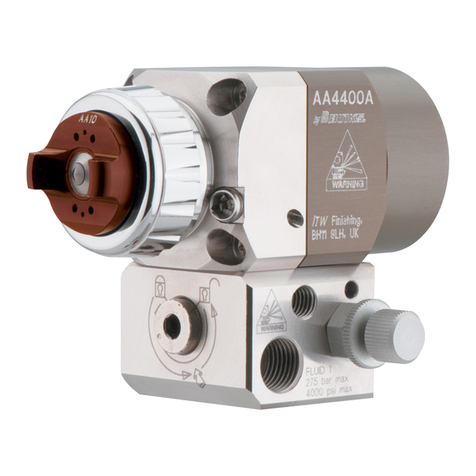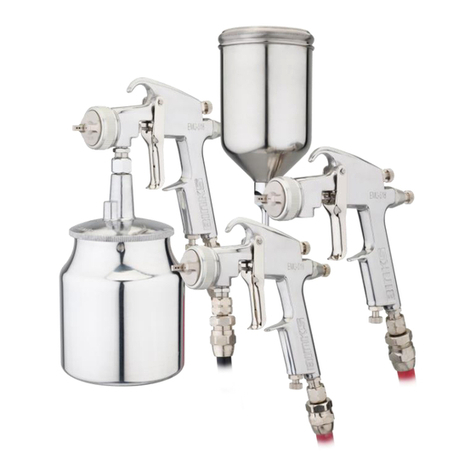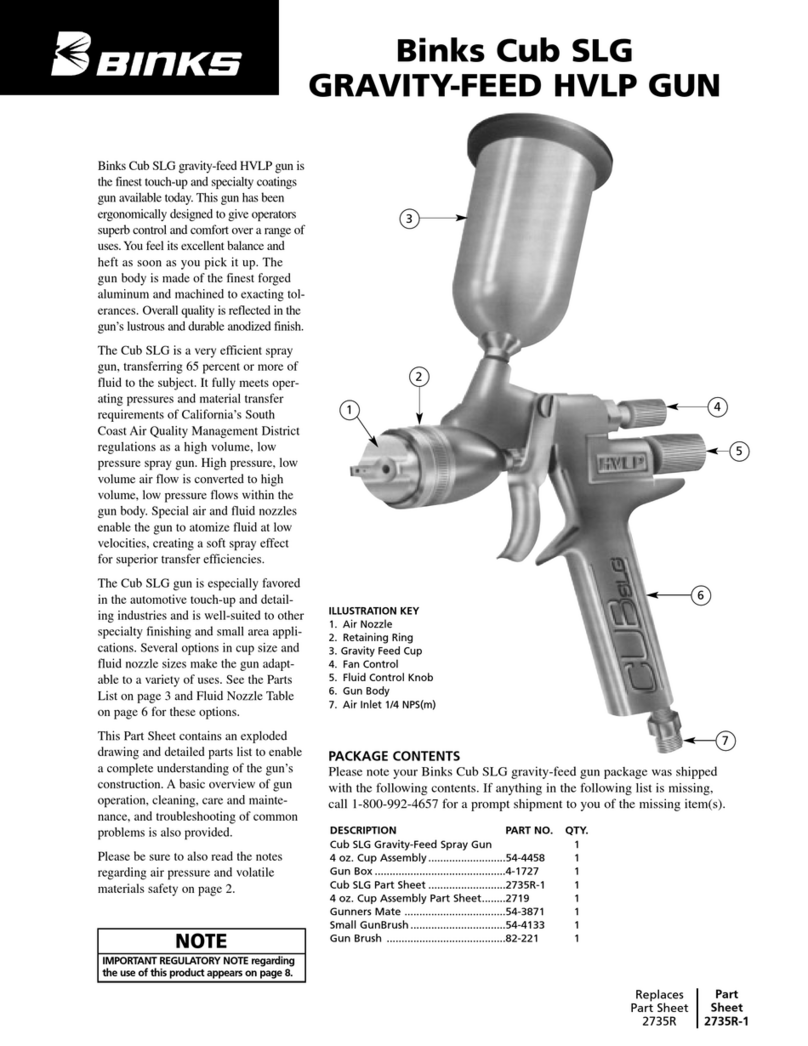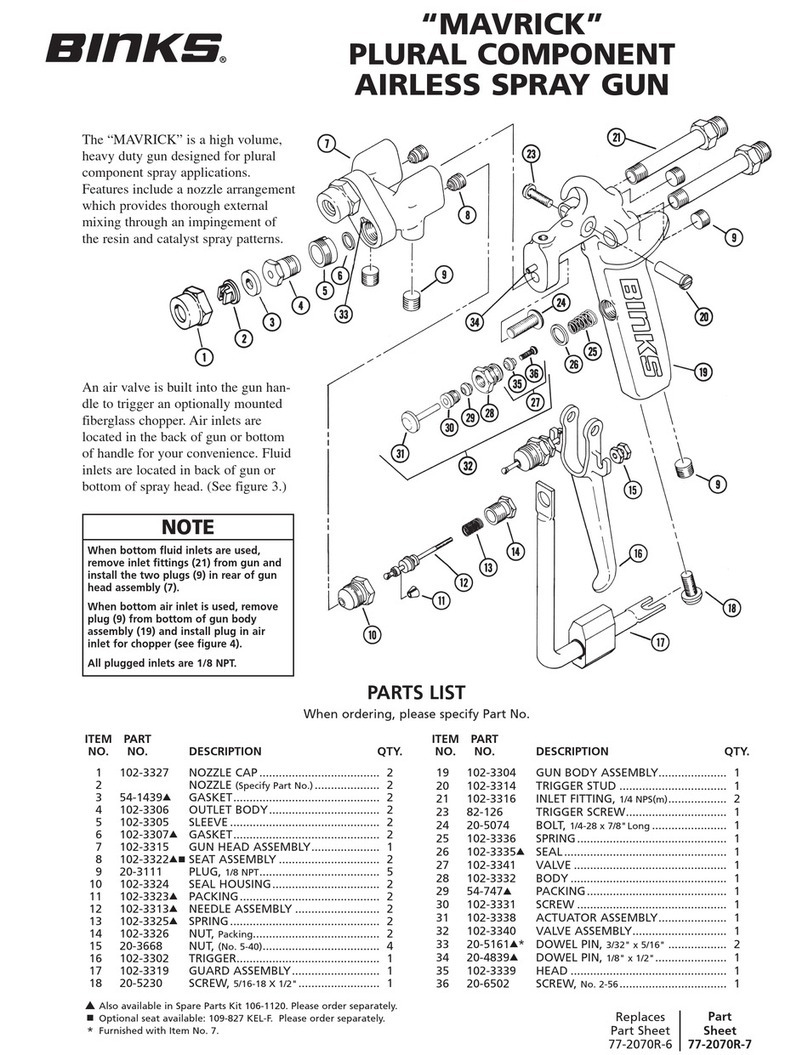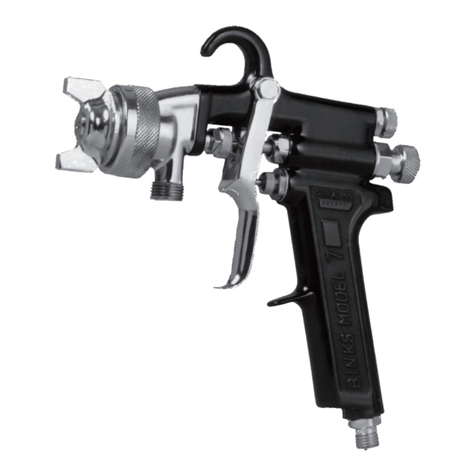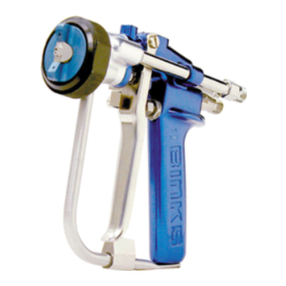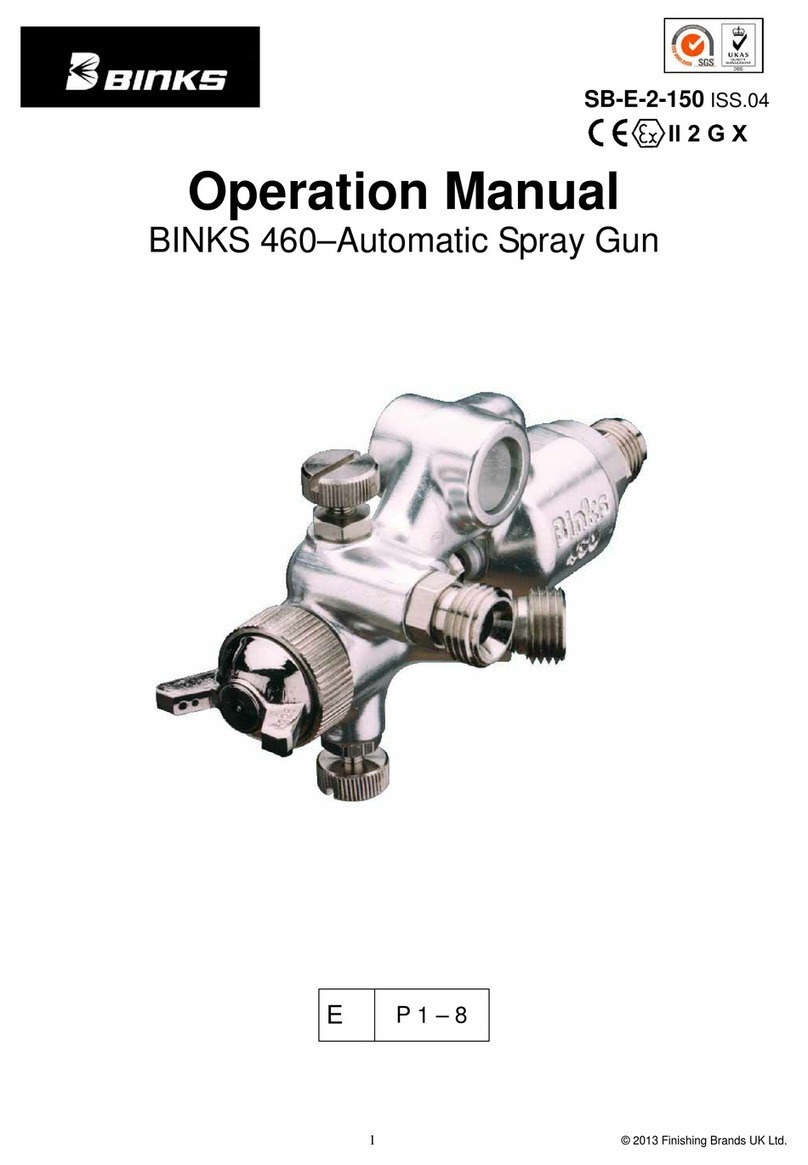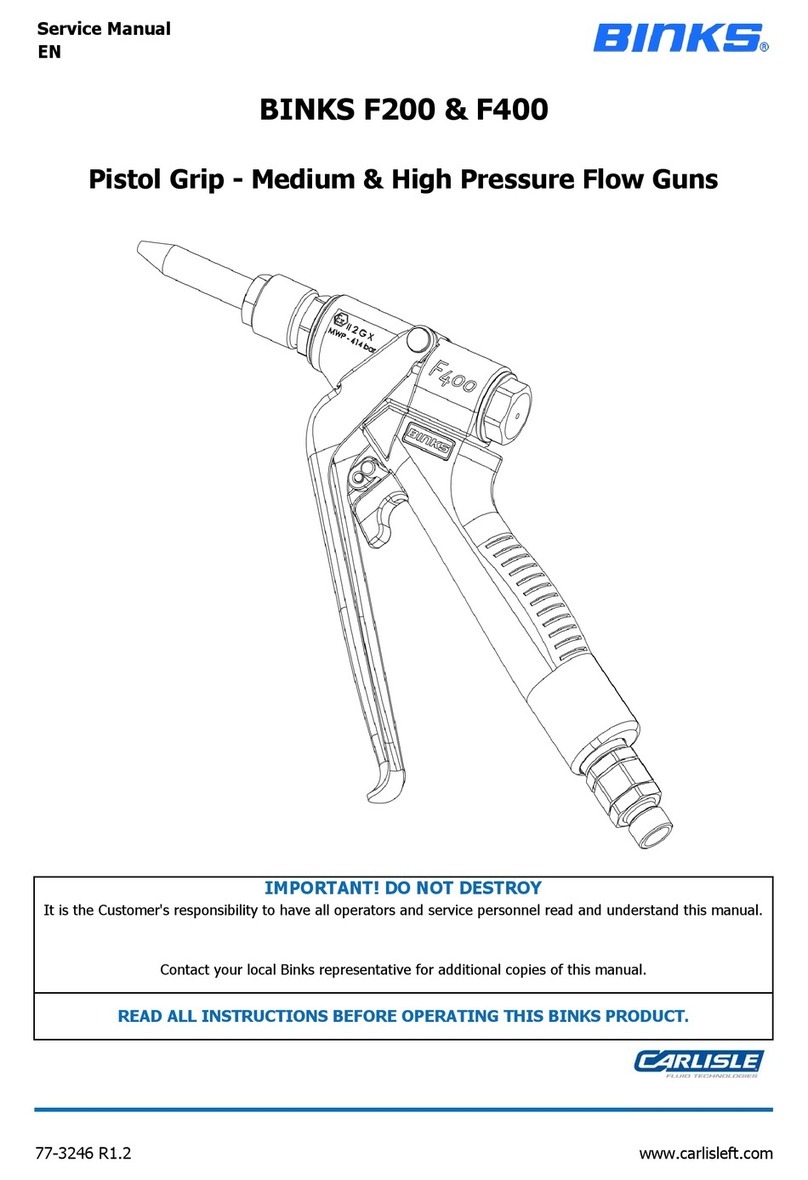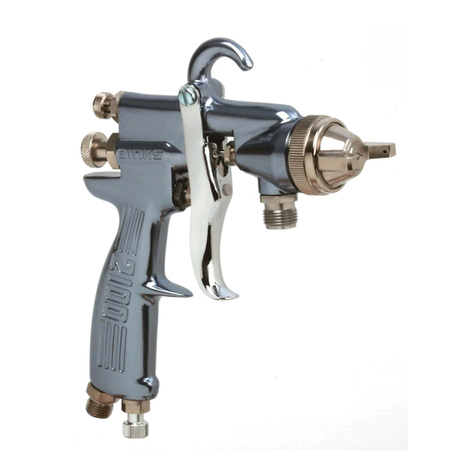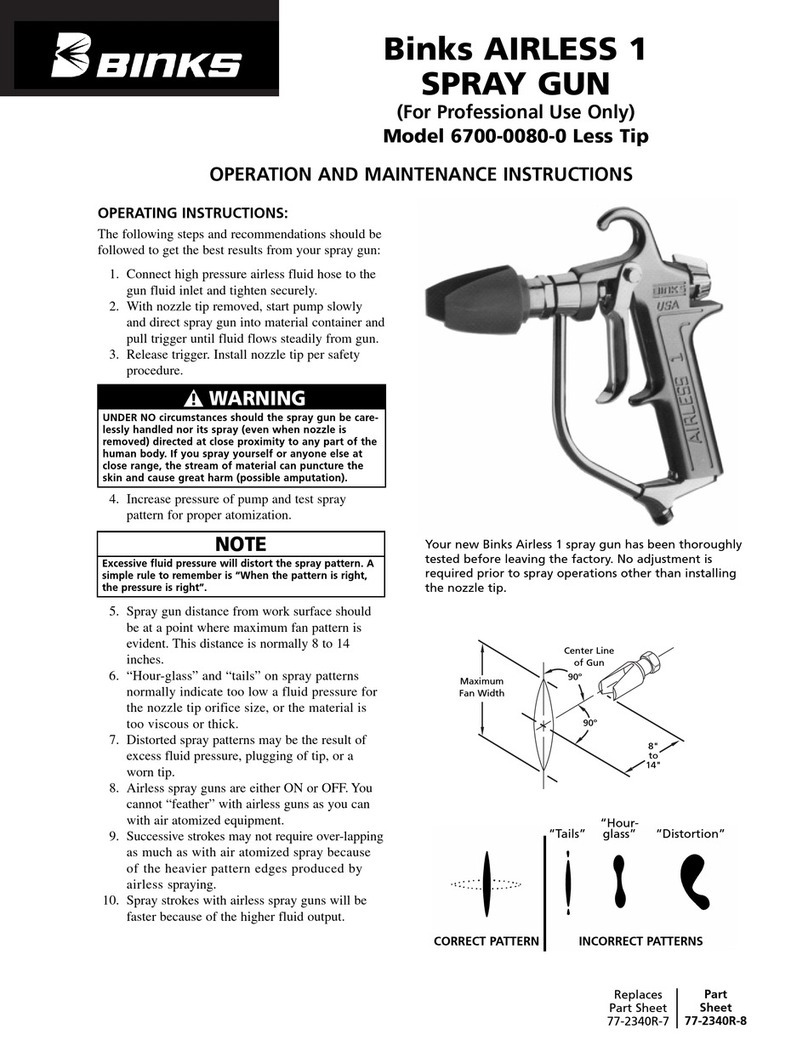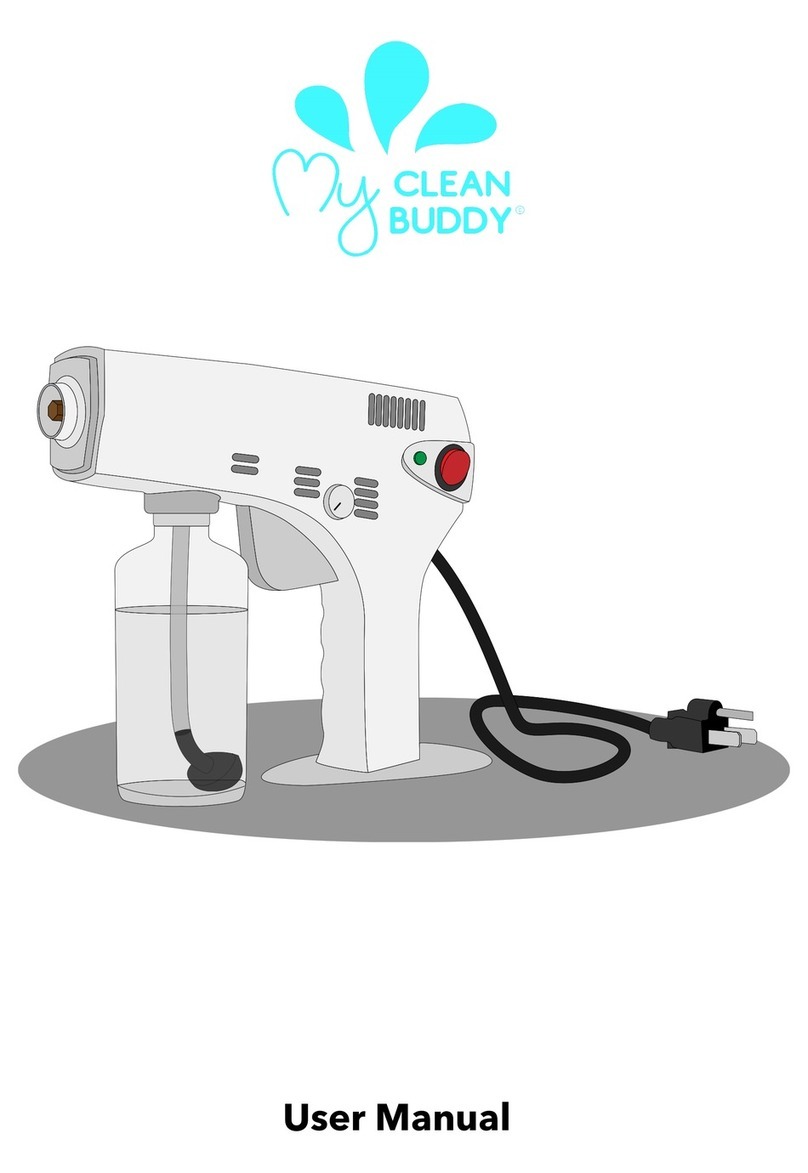
PARTS LIST
When ordering, please specify Part No.
7
ITEM PART
NO. NO. DESCRIPTION QTY.
ITEM PART
NO. NO. DESCRIPTION QTY.
35 54-704††★ RING............................................... 1
36 54-724★FLUID CONTROL ASSEMBLY ......... 1
37 54-725•SCREW ......................................... 1
38 54-728-5■•SPRING (Kit of 5)........................... 1
39 54-727•RING ............................................ 1
40 54-726•BODY........................................... 1
41 54-768★CONNECTION ................................ 1
42 54-753★TRIGGER ........................................ 1
43 54-1341 AIR VALVE ASSEMBLY................... 1
44 54-1340 NUT.............................................. 1
45 54-747-5 ■•PACKING (Kit of 5) ....................... 1
46 54-751★BODY........................................... 1
47 54-744■★STEM............................................ 1
48 54-750-5■•SPRING (Kit of 5)............................. 1
49 54-749-5■•GASKET (Kit of 5)............................ 1
50 54-718★SLEEVE ........................................... 1
51 54-721★RETAINER....................................... 1
52 54-722-5■•WIPER (Kit of 5) .............................. 2
53 2-28-5■•PACKING (Kit of 5).......................... 1
54 54-765★NUT................................................ 1
55 73-165 ♦WRENCH Gunhead (Optional) ........... 1
56 OMX-88 BRUSH (Optional) ............................. 1
57 82-469 BRUSH (Optional) ............................. 1
** When ordering, please specify number stamped on nozzle.
** When ordering, please specify number stamped on needle stem.
† Furnished with nozzle. See Nozzle Chart.
†† Not Furnished with nozzle. Please order separately. See Nozzle Chart.
■Available in Repair Kit 6-188. Please order separately.
• Items NOT available separately.
♦ Optional. Please order separately.
Available only as a quantity pack.
★ Available from Binks distributors only.
54-839 Heavy Duty Spring (Optional).
†† PE Pressure feed, external mix. SE Siphon feed, external mix.
* Not furnished with nozzle. Please order separately.
** Furnished with nozzle.
♦ All needles are stainless steel.
NOZZLE AND NEEDLE SELECTION CHART
TYPE OF FLUID VISCOSITY
TO BE SPRAYED
THIN
Sealers, Lacquers, Primers,
Stains, Zinc Chromates,
Lubricants
MEDIUM
Lacquers, Enamels, Varnishes,
Shellacs, Primers, Epoxies,
Urethanes, Lubricants
MEDIUM HEAVY
House Paint, Multicolors,
Wrinkles
CFM AT MAX. AIR NOZZLE
FLUID xAIR NOZZLE 30 50 70 PATTERN FLUID♦RETAINING
NOZZLES TYPE †† PSI PSI PSI AT 8" NEEDLE RING
33SS x33PM PE 10.1 15.0 20.0 10.0" 33 54-704*
36SS x36SD SE 7.8 11.5 — 10.0" 36 **
33BSS x33PM PE 10.0 15.0 20.0 10.0" 33 54-704*
36SS x36SD SE 7.8 11.5 — 10.0" 36 **
36SS x36SK SE 11.5 15.7 20.2 13.0" 36 **
38SS x38PM PE 9.3 14.9 20.0 10.0" 38 **
FLUID NOZZLE 33SS 33BSS 36SS 38SS
ORIFICE SIZE .040 .046 .070 .086
12 * AIR NOZZLE................................... 1
13 * FLUID NOZZLE............................... 1
14 54-706•HEAD AND BODY ASSEMBLY....... 1
15 54-707★HEAD ........................................... 1
16 54-710★SCREW ......................................... 1
17 54-711•BODY........................................... 1
18 54-759★SCREW Trigger................................ 1
19 54-760★STUD Trigger................................... 1
20 54-729★SIDE PORT CONTROL ASSEMBLY . 1
21 54-730★STEM............................................ 1
22 54-736■•SPRING......................................... 1
23 54-737★•WASHER ...................................... 1
24 54-738-5■•PACKING (Kit of 5)........................ 1
25 54-735★SPINDLE ....................................... 1
26 54-739■★GASKET ....................................... 1
27 54-734★HOUSING..................................... 1
28 54-740★KNOB........................................... 1
29 54-742•WASHER ...................................... 1
30 — SCREW ......................................... 1
31 54-723-5■•GASKET (Kit of 5)............................ 1
32 54-717★HOUSING ....................................... 1
33 ** NEEDLE VALVE ............................. 1
34 † RING............................................... 1


